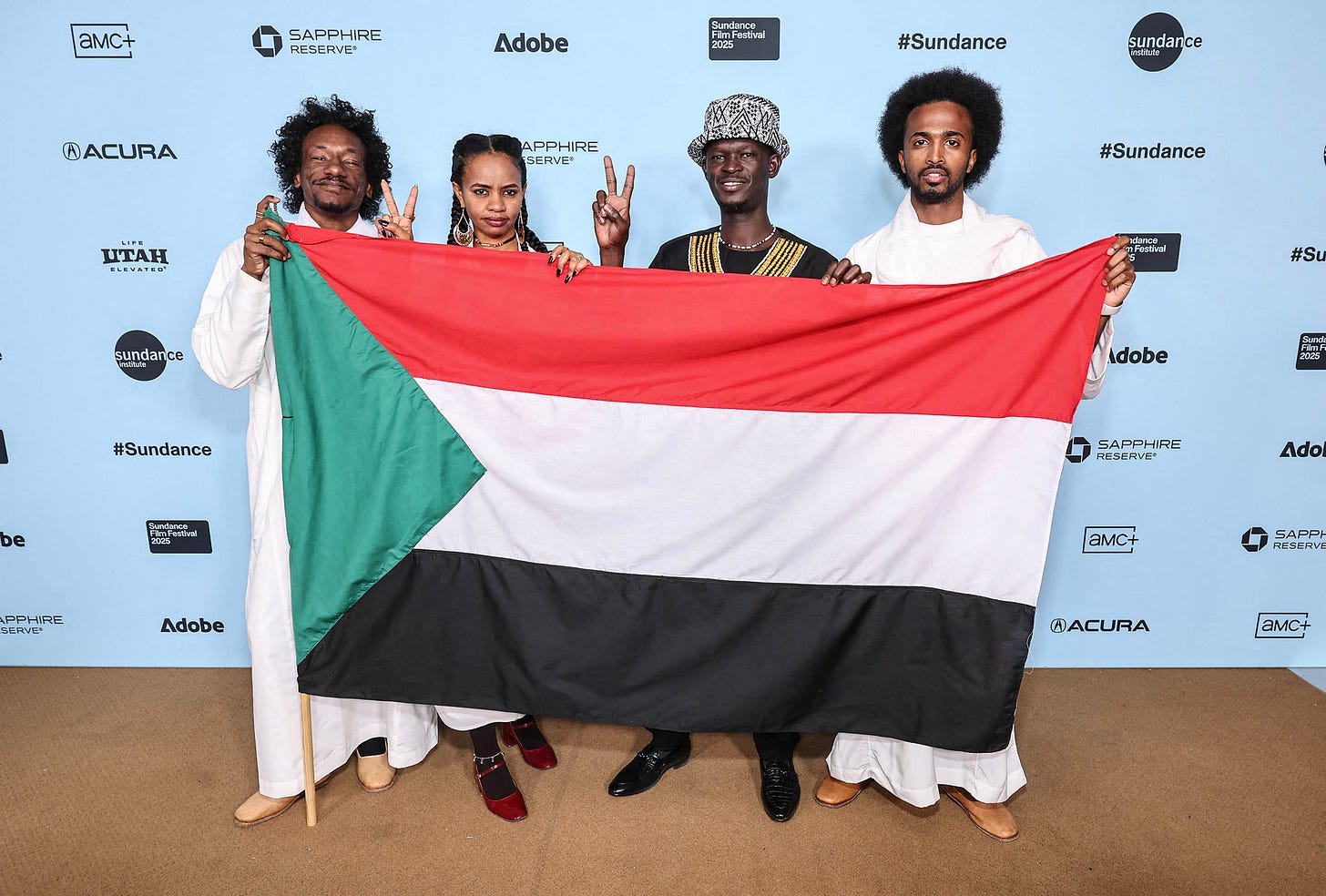Khartoum: More than just another sad story
From Sundance to the Berlinale, a genre-bending documentary on Sudanese life is winning plaudits and prizes. The Continent speaks to Khartoum’s directors.
Wilfred Okiche

When Ibrahim Snoopy Ahmad, Rawia Alhag and Anas Saeed responded to a call for pitches in 2021, they were living in the interesting times following the ouster of Sudan’s long-time dictator Omar al-Bashir in popular revolution. Times in Sudan became terribly interesting in April 2023 when two generals behind its revolution fell out and dragged the country into violent conflict.
They took upon themselves the hazardous responsibility of documenting these times. The result is Khartoum, a documentary that follows five Sudanese residents as they navigate their realities. Five citizens of the capital re-enact their stories of survival and freedom through the country’s revolution, and civil war. The film is a feat of imagination – and overcoming production obstacles.
The Sudan Film Factory, with Phil Cox’s Native Voice Films, commissioned the film and trained the cohort to create the project, which was envisioned as a cinematic poem about the city.
Filmmaking initially went as well as it ever goes in a resource-thin environment.
Snoopy Ahmad was following Jawad, a Sufi Rastafarian who volunteered with one of the resistance committees that organised the revolution.
Rawia Alhag was documenting two street children, Lokain and Wilson. Saeed’s participant, Khadmalla, was a tea vendor and single mother.
Timeea Mohamed Ahmed focused on Magdi, a middle-aged civil servant.
Then war broke out.
Production funds had to be redirected to getting the filmmakers and participants out of Sudan. Resettling everyone between Kenya and Egypt took a couple of months and communication broke down between the crew and their subjects. “The priorities changed for a while,” Rawia Alhag, the sole woman in the collective, recalls.
Once people were resettled and had received some therapy, filmmaking could restart. But how do you make a film about Khartoum when you are not even there?
“We did not want the film to be another reportage with footage of war and displaced places,” Snoopy Ahmad explains. Instead, the filmmakers found themselves thinking about meta-narratives. Do the people behind the camera continue pretending to be unrelated observers of their subjects?
“We had similar troubles – safety, displacement, passport issues, lack of internet,” says Timeea Ahmed. The collective decided to introduce a green screen component where the subjects were urged to reconstruct their wartime experience and share their hopes for the future in animated fantasy sequences. Each filmmaker would lead their subjects into the process with their own stories of the war. Some of these meta moments made it into the film’s final cut.
The result is a scrappy but ingenuous, ingenius documentary that captures the humanity of its subjects and makers, and testifies that “dreams, hopes and ambitions may change during times of conflict but they remain,” as Ahmad puts it.
“This isn’t a sad story from Africa where we are asking for help. We ask you to know us, feel what we feel, listen to our story and enjoy cinema,” says Ahmed.





